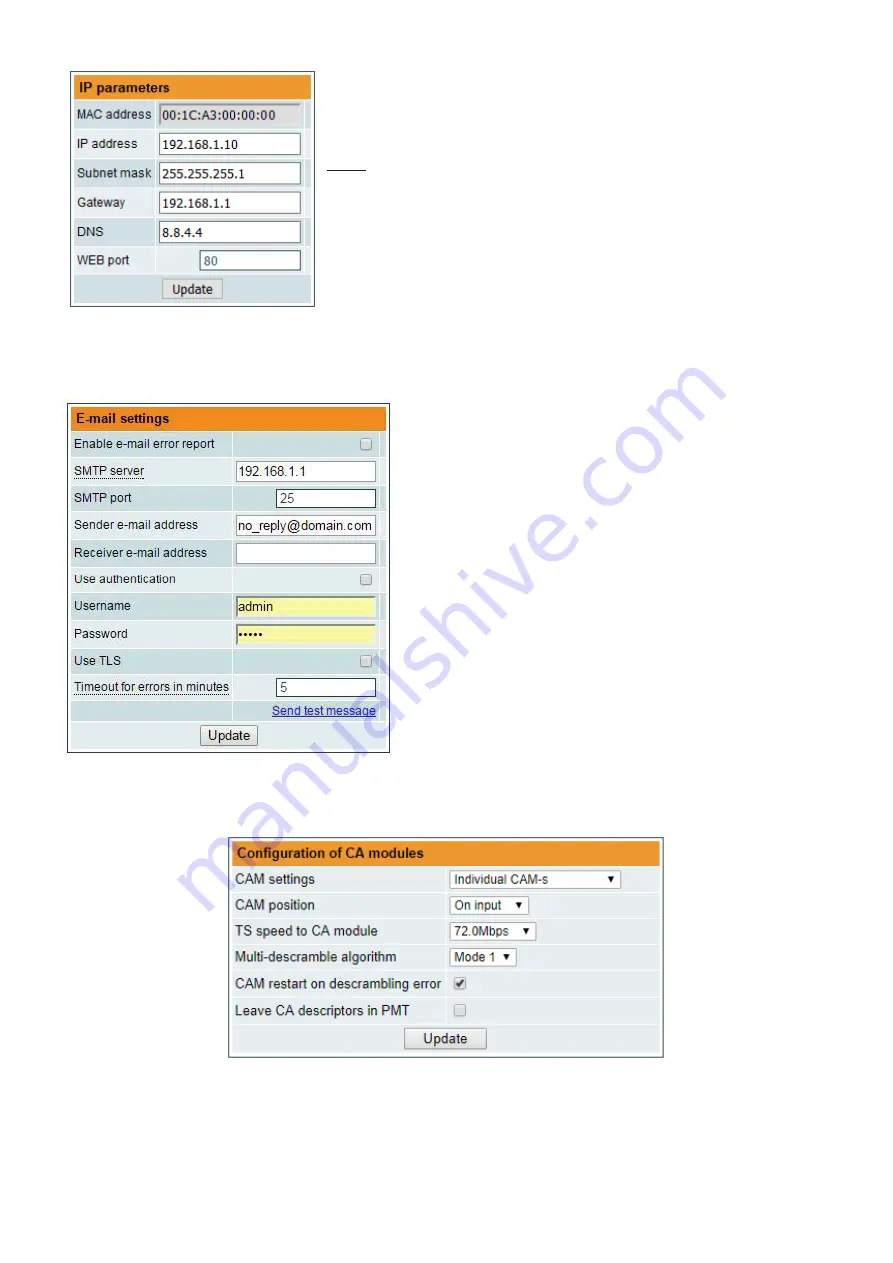
14
6.8 IP settings
All device IP settings can be configured here – IP address, subnet mask, gateway,
DNS (Domain Name System), see Figure 29. Starting with software version 1.41,
the “WEB port” number can be customized. Default is 80. You must restart the
device for the port change to take effect. All other IP parameters will be updated
immediately after pressing „Update“ button and redirected to new location.
NOTE
: Press the
RESET
and default IP button [7] for more than three seconds
to set default IP address of the control Ethernet interface (see Figure 1). Ethernet
led indicators "activity" [5] and "link" [6] will start to toggle to inform, that the reset
IP address request has been accepted. Device will be restarted with default IP
address.
To restore all parameters to default values (including password), keep pressing the
button for additional 4 seconds. The green (link) indicator will start blinking after
that time indicating, that a “restore defaults” command has been accepted. Now
the button can be released. Yellow (activity) indicator will light on while resetting
parameters. After that device will restart with all default values.
6.9 E-mail-settings
The device can send e-mail reports if errors were detected. SMTP
protocol is used for that. Figure 30 “E-mail-settings table” shows
parameters related to this feature. “Enable e-mail error report”
checkbox enables error monitoring. All errors within “timeout” period
will be gathered, and send to the e-mail address, provided in “Receiver
e-mail address” input box. Comma separated e-mail addresses can be
used to send report to multiple addresses. The timer will be started as
soon, as the first error is detected, and stopped when e-mail is sent.
The timer will be restarted again if a new error will appear.
“Sender e-mail address” can be used as authentication in the SMTP
server side.
SSL (SMTPS) protocol is not supported.
Figure 30. E-mail-settings table
6.10 CAM settings
Figure 31. Configuration of CA modules
Figure 29. IP settings table















































